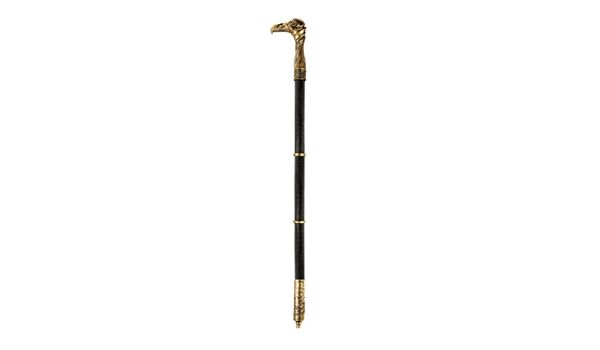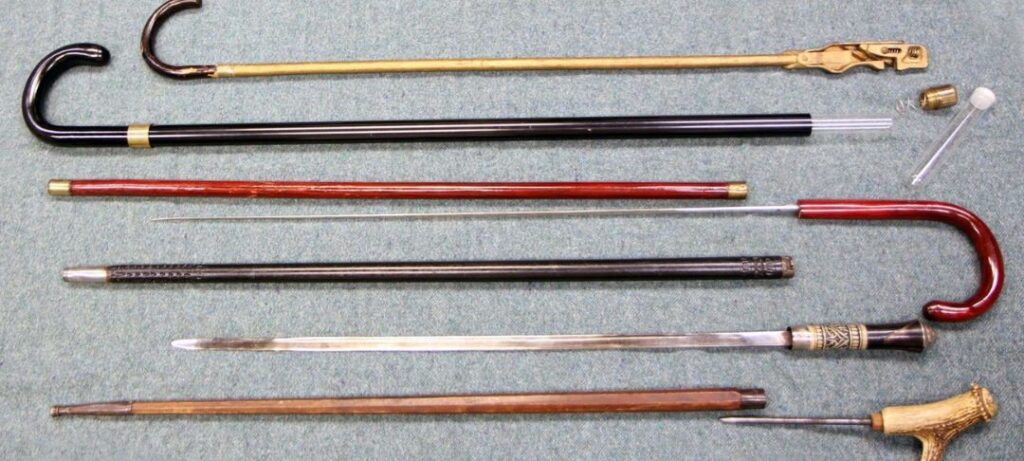Traveling with a cane can be a challenging experience, especially if you are not familiar with the regulations and policies of different airlines. If you are a person with mobility issues, a cane can be a vital tool for your independence and safety, both at home and while traveling. The type of cane you choose to bring with you on a plane is important, as some airlines and governments have restrictions on the types of canes that are allowed on board. In this blog post, we will discuss the regulations for traveling with a cane, the types of canes allowed on planes, and provide tips to make your trip more comfortable.
Regulations for Traveling with a Cane
When traveling with a cane, it is important to be aware of the regulations and policies of the airline and government. The Transportation Security Administration (TSA) and the Federal Aviation Administration (FAA) have guidelines for carrying a cane on a plane, and these guidelines may vary depending on the airline you are flying with. The TSA considers canes as medical devices, and they are usually allowed through security checkpoints, but they may be subject to additional screening. The FAA does not have specific regulations for canes, but airlines may have their own policies for carrying canes on board. For example, some airlines may allow canes to be stored in the overhead compartment, while others may require that they be stored under the seat in front of you. It is important to check the policies of your airline before traveling, to avoid any confusion or delays at the airport. In addition to the guidelines set by the TSA and FAA, different countries have their own regulations for carrying canes on planes. For example, some countries may have restrictions on the length or weight of canes, or they may require that they be stored in a specific manner. If you are traveling internationally, it is a good idea to research the regulations for the country you are visiting, to ensure that your cane meets their requirements.
Types of Canes Allowed on Planes
When choosing a cane to bring on a plane, it is important to consider the type of cane, as different types have different benefits and restrictions. Some of the most common types of canes include wooden, aluminum, carbon fiber, and folding canes. Each type of cane has its own pros and cons, and it is important to choose a cane that meets your needs and fits within the regulations of the airline and government. Wooden canes are classic and stylish, but they can be heavy and not as durable as other types of canes. Aluminum canes are lightweight and strong, but they may not be as stylish as wooden canes. Carbon fiber canes are also strong and lightweight, but they can be more expensive than other types of canes. Folding canes are portable and convenient, but they may not be as strong as other types of canes. When choosing a cane for travel, it is important to consider the weight, strength, and portability of the cane. You may also want to consider the style and appearance of the cane, as well as the cost. By taking the time to research the different types of canes, you can find the perfect cane for your needs and make your trip more comfortable and convenient.
How to Pack Your Cane for a Flight

Packing your cane for a flight can be a bit of a challenge, especially if you are trying to avoid damage or getting it lost or delayed. However, with a little preparation and planning, you can make sure your cane arrives at your destination safe and sound. Here are some tips to help you pack your cane for a flight:
- Consider packing your cane in a protective case: A protective case can help keep your cane safe during transit and prevent it from getting damaged or lost. You can find cane cases in a variety of materials, including hard plastic, soft fabric, and even hard-shell luggage.
- Pack your cane in your carry-on: If you are flying with a metal cane, it is best to pack it in your carry-on bag. This way, you can keep an eye on your cane and ensure that it does not get damaged or lost during transit.
- Label your cane: You can use a luggage tag or a label maker to label your cane with your name, address, and phone number. This will help you keep track of your cane if it does get lost, and it will make it easier for the airline or TSA to return it to you if necessary.
- Consider disassembling your cane: If your cane can be disassembled, it may be a good idea to do so before packing it. This will make it easier to fit in your carry-on bag and will reduce the chances of damage during transit.
- Follow TSA guidelines: Make sure to follow TSA guidelines when packing your cane for a flight. For example, the TSA may require that you remove your cane from your carry-on bag and place it through the x-ray machine for additional screening.
- By following these tips,
- you can help ensure that your cane arrives at your destination safe and sound.
- Whether you are traveling for business or pleasure, your cane is a vital tool
- for your independence and safety, and it is important to take care of it during
- transit.
Benefits of Traveling with a Metal Cane
- Metal canes are a popular
- the choice for people who are looking for a durable, lightweight, and stylish
- option for their mobility needs. Here are some of the benefits of traveling
- with a metal cane:
- Durability: Metal canes are strong and durable, making them ideal for travel. They can withstand the wear and tear of being packed and unpacked, and they are less likely to break or become damaged than other types of canes.
- Lightweight: Metal canes are typically lighter than other types of canes, making them easier to carry and handle. This can be especially beneficial for travelers who are on the go and need a lightweight cane for mobility.
- Style: Metal canes come in a variety of styles and designs, making them a stylish accessory for your travels. Whether you prefer a sleek, modern look or a more classic and traditional design, you can find a metal cane that fits your style.
- Adjustable height: Many metal canes are adjustable in height, allowing you to customize the height of your cane to suit your needs. This can be especially helpful for travelers who are taller or shorter than average, as it ensures a comfortable fit for your cane.
- Easy to carry: Metal canes are easy to carry, making them a convenient option for travelers. They are small enough to fit in your carry-on bag, and they can be stored under the seat in front of you on a plane.
How to Make Your Metal Cane TSA Compliant
If you are traveling with a metal cane, it is important to make sure that it is TSA-compliant. This means that it meets the security requirements set by the Transportation Security Administration (TSA). Here are some tips to help you make your metal cane TSA-compliant:
- Know TSA regulations: Before you travel, make sure you are familiar with TSA regulations for traveling with a cane. This will help you avoid any issues at the security checkpoint.
- Remove your cane from your carry-on: The TSA may require that you remove your cane from your carry-on bag and place it through the x-ray machine for additional screening. Make sure to follow the TSA’s instructions and be prepared to present your cane for inspection if necessary.
- Avoid carrying prohibited items: Some items are prohibited from being carried on a plane, even if they are part of a cane. For example, cane swords and other weapons are not allowed. Make sure to check the TSA’s website for a list of prohibited items to ensure that your cane is TSA-compliant.
- Pack your cane in a protective case: A protective case can help keep your cane safe during transit and prevent it from getting damaged or lost. Consider packing your cane in a protective case to ensure that it meets TSA requirements.
- Be prepared for additional screening: Depending on your cane, it may require additional screening. Be prepared to present your cane for inspection and be patient while the TSA officers conduct their screening.
By following these tips, you can help ensure that your metal cane is TSA-compliant and avoid any issues at the security checkpoint. Whether you are traveling for business or pleasure, it is important to make sure that your cane meets TSA requirements to help make your trip as smooth as possible.
How to Make Your Trip with a Metal Cane More Comfortable
If you are traveling with a metal cane, there are a few things you can do to make your trip more comfortable. Here are some tips to help you have a comfortable trip with your metal cane:
- Choose a comfortable handle: A comfortable handle is essential for a comfortable trip with your metal cane. Consider choosing a handle that is made of soft, non-slip material to help prevent blisters and provide a comfortable grip.
- Adjust the height of your cane: Make sure that the height of your cane is adjusted to your needs. A properly adjusted cane will help ensure that you are able to walk comfortably and with good posture.
- Pack a spare cane: If you are traveling for an extended period of time, consider packing a spare cane. This will give you peace of mind in case your primary cane becomes damaged or lost during your trip.
- Use a wrist strap: A wrist strap can help prevent your cane from slipping out of your hand and provide extra security when walking. Consider using a wrist strap to help make your trip with your metal cane more comfortable.
- Take breaks: When traveling with a metal cane, it is important to take breaks and rest when needed. This will help you avoid fatigue and keep your energy levels up throughout your trip.
By following these tips, you can help make your trip with your metal cane as comfortable as possible. Whether you are traveling for business or pleasure, it is important to take care of yourself and your cane to ensure a smooth and enjoyable trip. Conclusion Traveling with a cane can be a challenge, but with the right preparation, it can be a safe and comfortable experience. By familiarizing yourself with the regulations and policies of the airline and government, and choosing the right type of cane for your needs, you can make your trip more enjoyable and stress-free.
